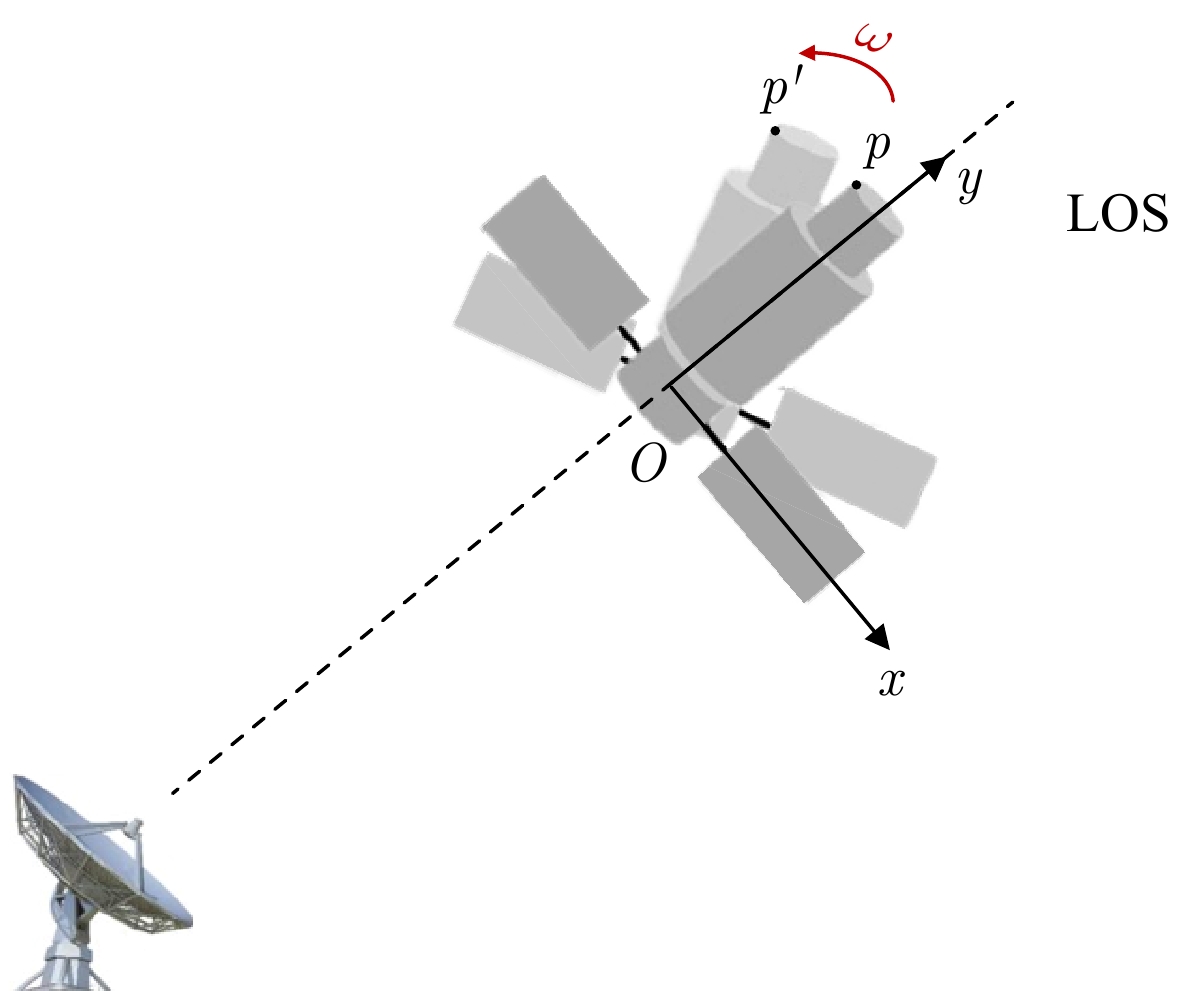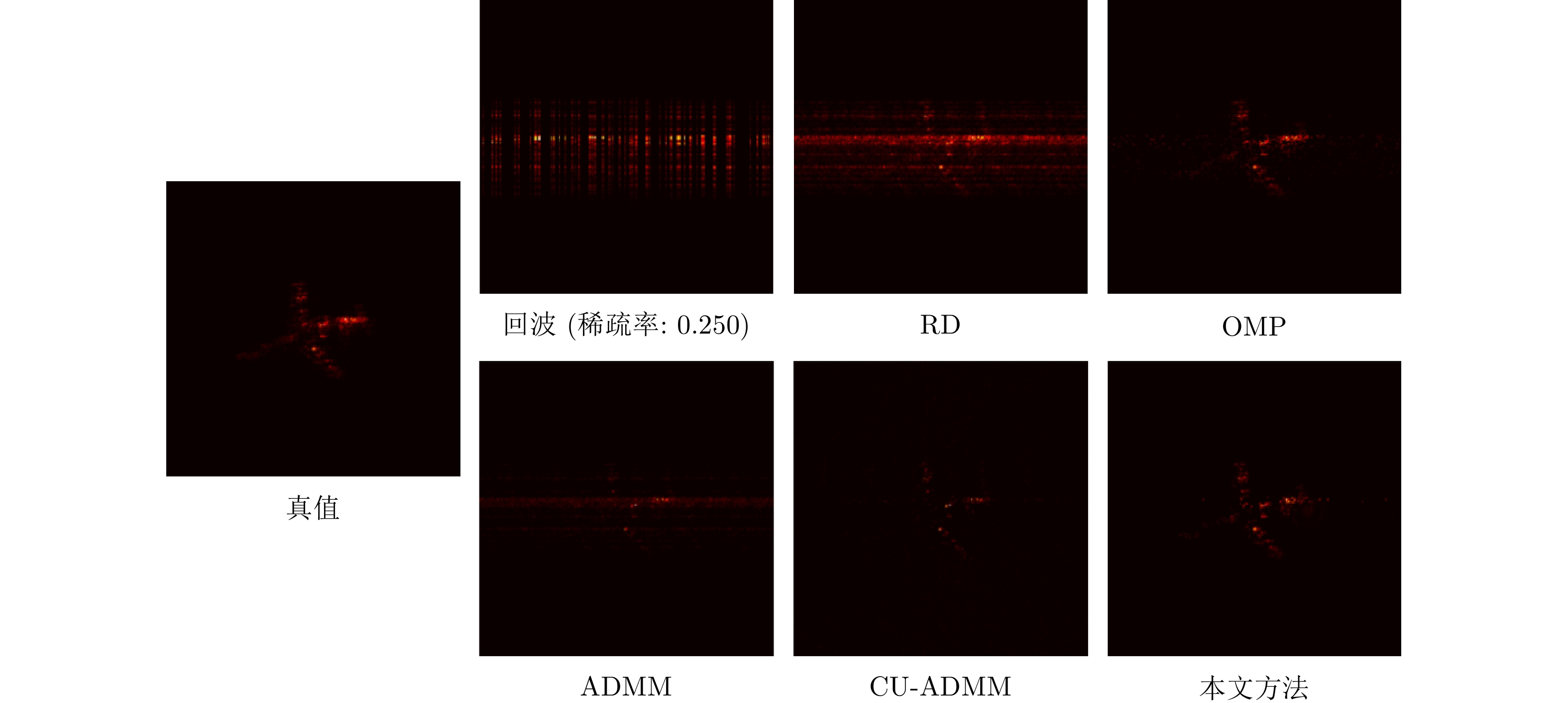| [1] |
丁鹭飞, 耿富录, 陈建春. 雷达原理[M]. 5版. 北京: 电子工业出版社, 2014.
DING Lufei, GENG Fulu, and CHEN Jianchun. Principle of Radar[M]. 5th ed. Beijing: Publishing House of Electronics Industry, 2014.
|
| [2] |
张双辉. 基于贝叶斯框架的稀疏孔径ISAR成像技术研究[D]. [博士论文], 国防科学技术大学, 2016.
ZHANG Shanghui. Research on sparse aperture inverse synthetic aperture radar imaging withing Bayesian framework[D]. [Ph.D. dissertation], National University of Defense Technology, 2016.
|
| [3] |
MALLAT S G and ZHANG Zhifeng. Matching pursuits with time-frequency dictionaries[J]. IEEE Transactions on Signal Processing, 1993, 41(12): 3397–3415. doi: 10.1109/78.258082 |
| [4] |
TROPP J A and GILBERT A C. Signal recovery from random measurements via orthogonal matching pursuit[J]. IEEE Transactions on Information Theory, 2007, 53(12): 4655–4666. doi: 10.1109/TIT.2007.909108 |
| [5] |
BOYD S, PARIKH N, CHU E, et al. Distributed optimization and statistical learning via the alternating direction method of multipliers[J]. Foundations and Trends® in Machine Learning, 2011, 3(1): 1–122. doi: 10.1561/2200000016 |
| [6] |
DONOHO D L. Compressed sensing[J]. IEEE Transactions on Information Theory, 2006, 52(4): 1289–1306. doi: 10.1109/TIT.2006.871582 |
| [7] |
ZHANG Lei, QIAO Zhijun, XING Mengdao, et al. High-resolution ISAR imaging by exploiting sparse apertures[J]. IEEE Transactions on Antennas and Propagation, 2012, 60(2): 997–1008. doi: 10.1109/TAP.2011.2173130 |
| [8] |
PENG Shaowen, LI Shangyuan, XUE Xiaoxiao, et al. High-resolution W-band ISAR imaging system utilizing a logic-operation-based photonic digital-to-analog converter[J]. Optics Express, 2018, 26(2): 1978–1987. doi: 10.1364/OE.26.001978 |
| [9] |
陈阿磊, 王党卫, 马晓岩, 等. 一种基于估计理论的ISAR超分辨成像方法[J]. 系统工程与电子技术, 2010, 32(4): 740–744.
CHEN Alei, WANG Dangwei, MA Xiaoyan, et al. Method of super resolution imaging for ISAR based on estimation theory[J]. Systems Engineering and Electronics, 2010, 32(4): 740–744.
|
| [10] |
ZHANG Lei, WANG Hongxian, and QIAO Zhijun. Resolution enhancement for ISAR imaging via improved statistical compressive sensing[J]. EURASIP Journal on Advances in Signal Processing, 2016, 2016(1): 80. doi: 10.1186/s13634-016-0379-2 |
| [11] |
XU Gang, XING Mengdao, XIA Xianggen, et al. High-resolution inverse synthetic aperture radar imaging and scaling with sparse aperture[J]. IEEE Journal of Selected Topics in Applied Earth Observations and Remote Sensing, 2015, 8(8): 4010–4027. doi: 10.1109/JSTARS.2015.2439266 |
| [12] |
WEI Shunjun, ZHANG Xiaoling, SHI Jun, et al. Sparse reconstruction for SAR imaging based on compressed sensing[J]. Progress in Electromagnetics Research, 2010, 109: 63–81. doi: 10.2528/PIER10080805 |
| [13] |
RONNEBERGER O, FISCHER P, and BROX T. U-Net: Convolutional networks for biomedical image segmentation[C]. 18th International Conference on Medical Image Computing and Computer-Assisted Intervention, Munich, Germany, 2015: 234–241.
|
| [14] |
GOODFELLOW I, POUGET-ABADIE J, MIRZA M, et al. Generative adversarial networks[J]. Communications of the ACM, 2020, 63(11): 139–144. doi: 10.1145/3422622 |
| [15] |
YANG Ting, SHI Hongyin, LANG Manyun, et al. ISAR imaging enhancement: Exploiting deep convolutional neural network for signal reconstruction[J]. International Journal of Remote Sensing, 2020, 41(24): 9447–9468. doi: 10.1080/01431161.2020.1799449 |
| [16] |
QIN Dan, LIU Diyang, GAO Xunzhang, et al. ISAR resolution enhancement using residual network[C]. 2019 IEEE 4th International Conference on Signal and Image Processing (ICSIP), Wuxi, China, 2019: 788–792.
|
| [17] |
QIN Dan and GAO Xunzhang. Enhancing ISAR resolution by a generative adversarial network[J]. IEEE Geoscience and Remote Sensing Letters, 2021, 18(1): 127–131. doi: 10.1109/LGRS.2020.2965743 |
| [18] |
WANG Haobo, LI Kaiming, LU Xiaofei, et al. ISAR resolution enhancement method exploiting generative adversarial network[J]. Remote Sensing, 2022, 14(5): 1291. doi: 10.3390/rs14051291 |
| [19] |
LI Ruize, ZHANG Shuanghui, ZHANG Chi, et al. Deep learning approach for sparse aperture ISAR imaging and autofocusing based on complex-valued ADMM-Net[J]. IEEE Sensors Journal, 2021, 21(3): 3437–3451. doi: 10.1109/JSEN.2020.3025053 |
| [20] |
LI Ruize, ZHANG Shuanghui, ZHANG Chi, et al. A computational efficient 2-D block-sparse ISAR imaging method based on PCSBL-GAMP-Net[J]. IEEE Transactions on Geoscience and Remote Sensing, 2021, 60: 5214814. doi: 10.1109/TGRS.2021.3111901 |
| [21] |
LEMPITSKY V, VEDALDI A, and ULYANOV D. Deep image prior[C]. The IEEE/CVF Conference on Computer Vision and Pattern Recognition, Salt Lake City, USA, 2018: 9446–9454.
|
| [22] |
LIANG Jingyun, ZHANG Kai, GU Shuhang, et al. Flow-based kernel prior with application to blind super-resolution[C]. The 2021 IEEE/CVF Conference on Computer Vision and Pattern Recognition, Nashville, USA, 2021: 10596–10605.
|
| [23] |
YUE Zongsheng, ZHAO Qian, XIE Jianwen, et al. Blind image super-resolution with elaborate degradation modeling on noise and kernel[C]. The 2022 IEEE/CVF Conference on Computer Vision and Pattern Recognition, New Orleans, USA, 2022: 2118–2128,
|
| [24] |
XIA Jingyuan, LI Shengxi, HUANG Junjie, et al. Metalearning-based alternating minimization algorithm for nonconvex optimization[J]. IEEE Transactions on Neural Networks and Learning Systems, 2022: 1–15.
|
| [25] |
YANG Zhixiong, XIA Jingyuan, LUO Junshan, et al. A Learning-aided flexible gradient descent approach to MISO beamforming[J]. IEEE Wireless Communications Letters, 2022, 11(9): 1895–1899. doi: 10.1109/LWC.2022.3186160 |
| [26] |
KINGMA D P and BA J. Adam: A method for stochastic optimization[C]. 3rd International Conference on Learning Representations, San Diego, USA, 2015.
|




 Submit Manuscript
Submit Manuscript Peer Review
Peer Review Editor Work
Editor Work





 DownLoad:
DownLoad:




